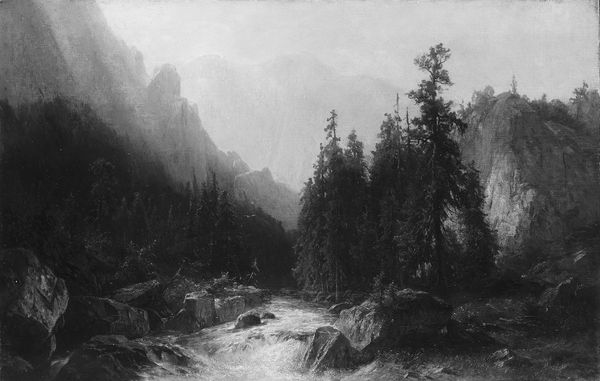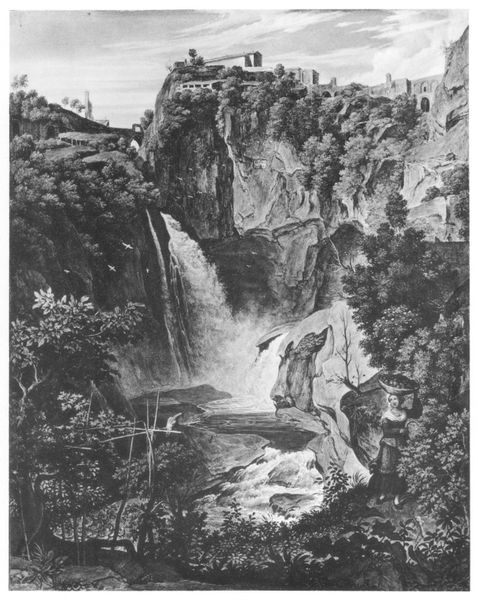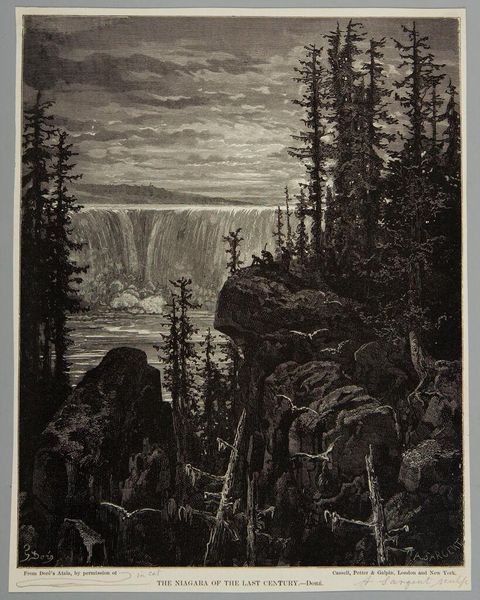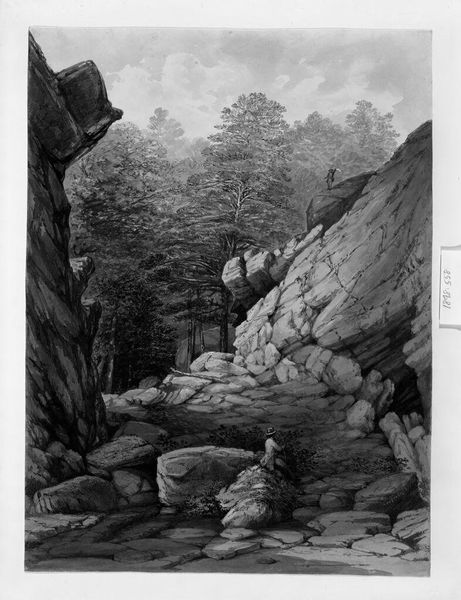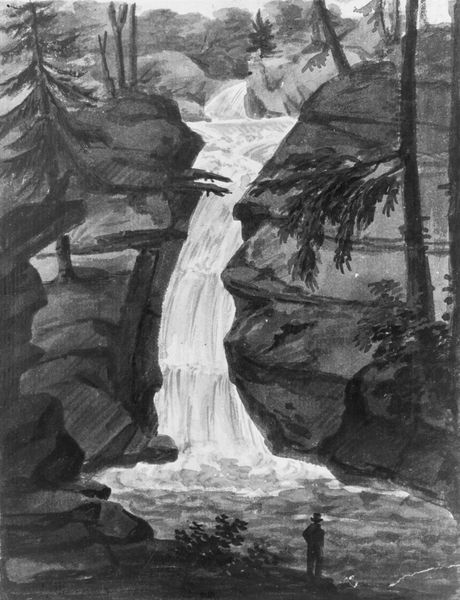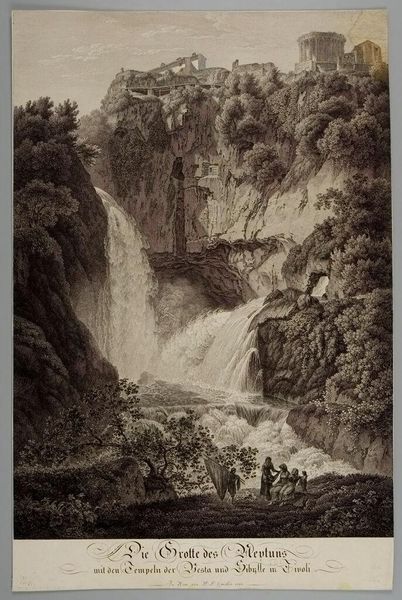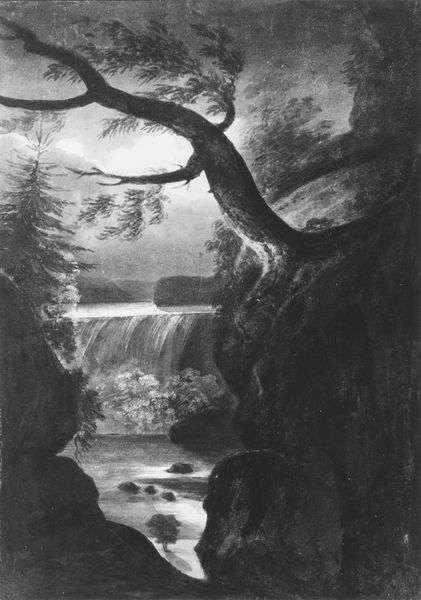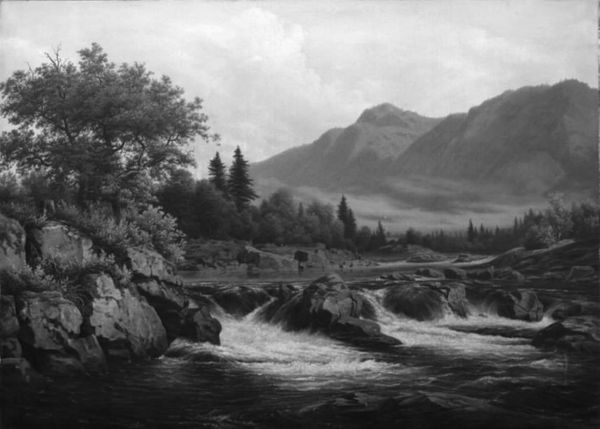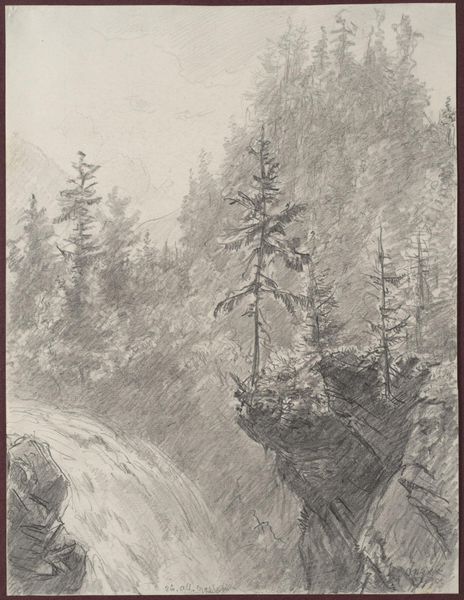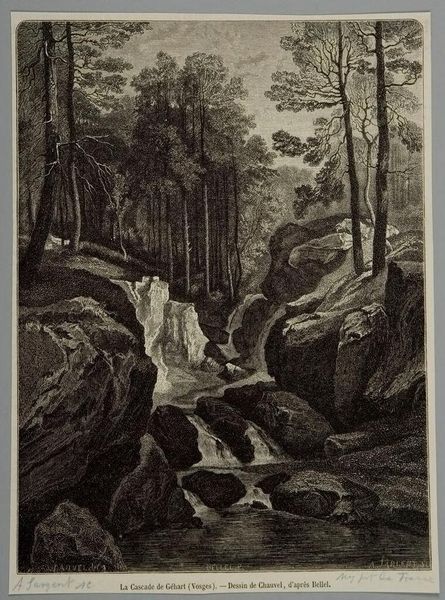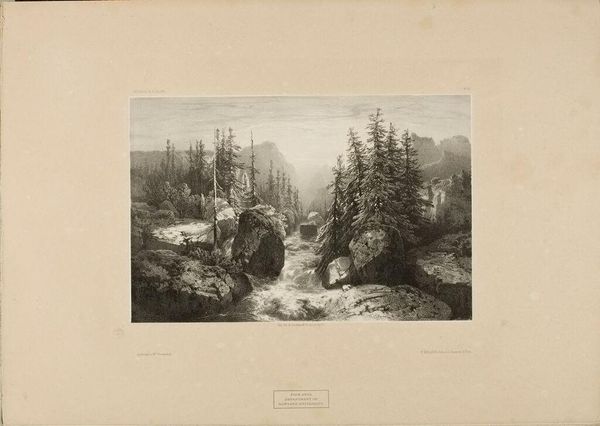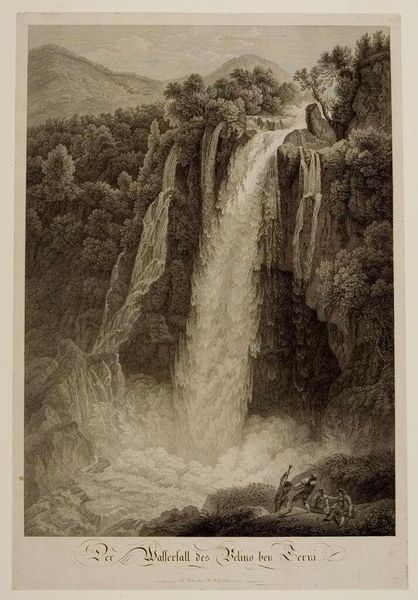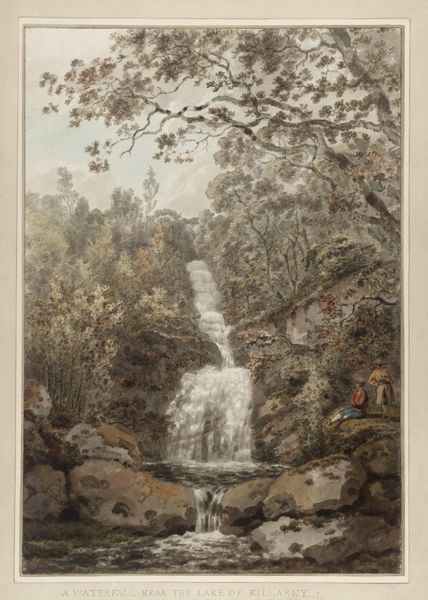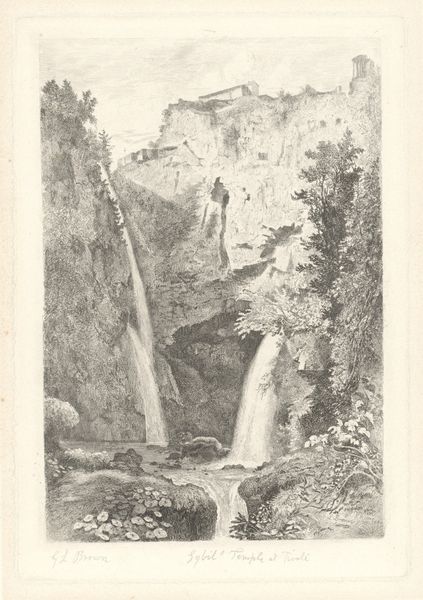
painting, plein-air
#
painting
#
plein-air
#
landscape
#
charcoal drawing
#
romanticism
#
charcoal
Dimensions: 109.5 cm (height) x 88.5 cm (width) (Netto)
Curator: Let's discuss this painting, "Skovrigt landskab med et vandfald," or "Wooded Landscape with a Waterfall," created around 1813, attributed to Samuel Mygind. It is currently held at the SMK, the National Gallery of Denmark. Editor: My first impression is that of immense detail—the textures of the water crashing against rocks and the leaves almost vibrate with life. Curator: Absolutely. Its adherence to plein-air tradition emphasizes direct observation of nature and mirrors the emerging Romantic sensibilities within Danish painting, positioning nature as a source of sublime experience. One could almost view this as a nationalist statement; look how nature has formed the Nordic regions! Editor: You can see the artist's meticulous dedication through his depiction of water flow—he's focused intently on representing that. I’d be interested to know if plein-air wasn't only an artistic decision but also a socio-economic factor—considering constraints around accessing studios versus nature. The means themselves change art production. Curator: Precisely! Museums, like the SMK, now canonize plein-air, a choice influenced by these same market forces, adding to the artwork's journey and our contemporary reception. Editor: Consider how access shapes this type of nature painting. Whose work made it into galleries, shaping perceptions around national landscapes and idealized environments versus everyday landscapes accessible to all? And from what types of available material resources are the paintings made? Curator: That's right, Samuel Mygind's work can then serve as a reminder of both individual expression and the dominant social ideologies present in the art world of his era. It's this intersection we keep coming back to: nature, labor, ideology. Editor: It prompts you to wonder, where will artworks with certain ideologies land? Today's materiality certainly tells tales of environmental impact with paints and waste that our modern audiences now view art through. Curator: Indeed, a crucial reflection for both us as audiences and custodians of art. Editor: I think you’re right!
Comments
No comments
Be the first to comment and join the conversation on the ultimate creative platform.
